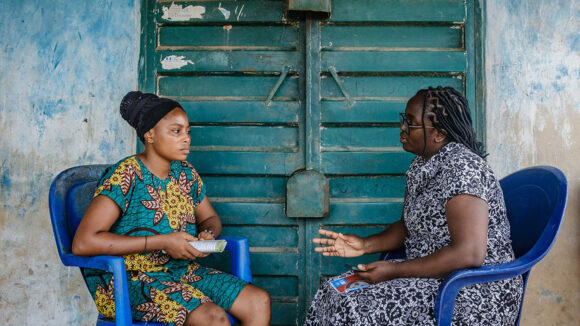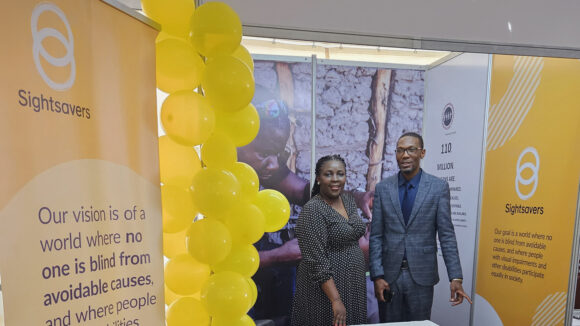Health heroes: the women working to eliminate NTDs
NOTE: This article is more than five years old, but may still be relevant. For more recent content, see our news and blogs page.

What do Evodia from Cameroon, Abena from Ghana and Mariama from Guinea all have in common? They’re just three of the millions of women on the front line in the fight against infectious diseases of poverty.
Evodia is a community distributor for Mectizan®, a drug that protects communities form river blindness. She ensures that members of her community receive their annual treatment.
Abena is a mother of five, living in the village of Gyankobaa, a remote community that health services struggle to reach. She makes sure that when treatments to protect her family against neglected tropical diseases are distributed, her family takes them.
Mariama is a community nurse in the Labe region of Guinea Conakry. She delivers much-needed eye care services and trains community health workers on eye health.
Neglected tropical diseases (NTDs), such as trachoma and onchocerciasis, have a devastating impact on communities and families. The major burden of this is often carried by women.
But women like Evodia, Abena and Mariama are often also the front line of defence against these diseases – as health workers or volunteers, and as mothers, sisters, daughters, aunts and grandmothers, protecting their families from ill health.
“Neglected tropical diseases have a devastating impact, and the major burden is often carried by women”
Let’s take trachoma as an example. It’s the world’s most common infectious cause of blindness and like many other NTDs, is very much linked to living in poverty – in crowded and unclean environments with poor access to water, sanitation and hygiene services. Each episode of ‘active trachoma’ infection causes scarring on the inside of the eyelid and without treatment, this scarring can make the eyelashes turn inward, scraping against the eye and slowly causing blindness.
Trachoma infection is most common in children. This means that women, as primary caregivers, are much more exposed than men to episodes of infection over their lifetime.
At the same time, through activities such as hygiene promotion, acting as community health volunteers and workers and disseminating health information through peer networks, women are uniquely placed within their communities to lead efforts to combat diseases like trachoma. Often it is participation, not skillsets, that is the major barrier.
Studies from another blinding NTD, onchocerciasis (also known as river blindness), show that women’s involvement in and delivery of preventive treatment can yield significant successes.
The same review found that community members reported women’s networks and their soft skills were a major asset to the programme, with women being viewed as more committed, persuasive and more patient than men in the distribution of Mectizan. And in some cases, a lack of women’s involvement in delivery of these treatments was cited as one reason for the limited effectiveness in the distribution of community treatments.
Participation is a major barrier to tackling NTDs
We know that elimination of trachoma and onchocerciasis is possible, and thanks to initiatives like the Global Trachoma Mapping Project we know where we need to target resources to eliminate these diseases.
But it requires more than just the usual calls for health promotion, political will and effective resource allocation. It requires the meaningful inclusion of women in the process as leaders and genuine participants, not simply service users or passive treatment recipients.
We need to establish more and stronger mechanisms for women’s active participation in NTD programmes. The participation of women like Evodia, Abena and Mariama in designing and implementing programmes that meet their needs and those of their communities is critical to achieving elimination of these diseases.
By Helen Hamilton, policy adviser at Sightsavers
Inclusion of women in NTD programmes
Want to read more about our work?
Neglected tropical diseases
Why community collaboration is important in our research
Our research on female genital schistosomiasis has highlighted the need to establish a safe and supportive environment for participants when studying sensitive topics.

The key to inclusive education is engaging organisations of people with disabilities
Collaborating with organisations of people with disabilities (OPDs) on our inclusive education projects has earned the Sightsavers-led Inclusive Futures consortium a Zero Project Award in 2024.

Six takeaways from the International Conference for Public Health in Africa
Sightsavers’ Hortance Manjo shares insights from the event in Zambia, which highlighted eye health for the first time.